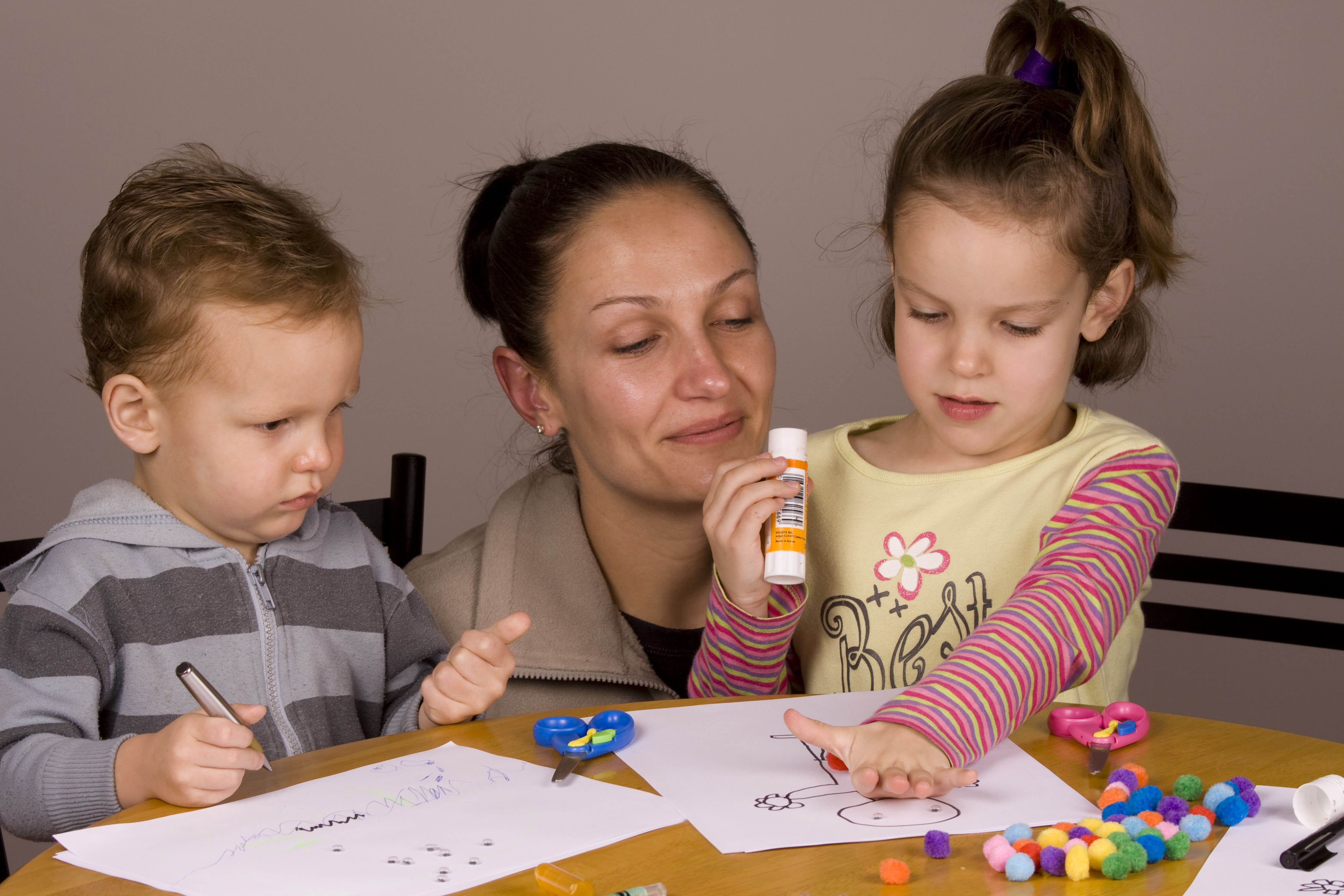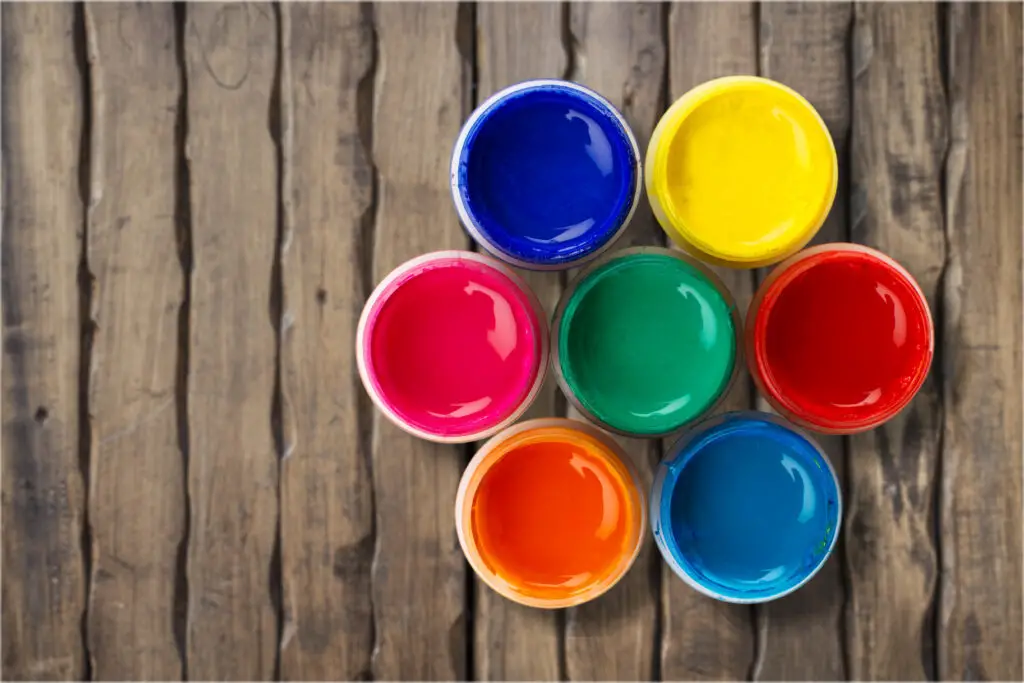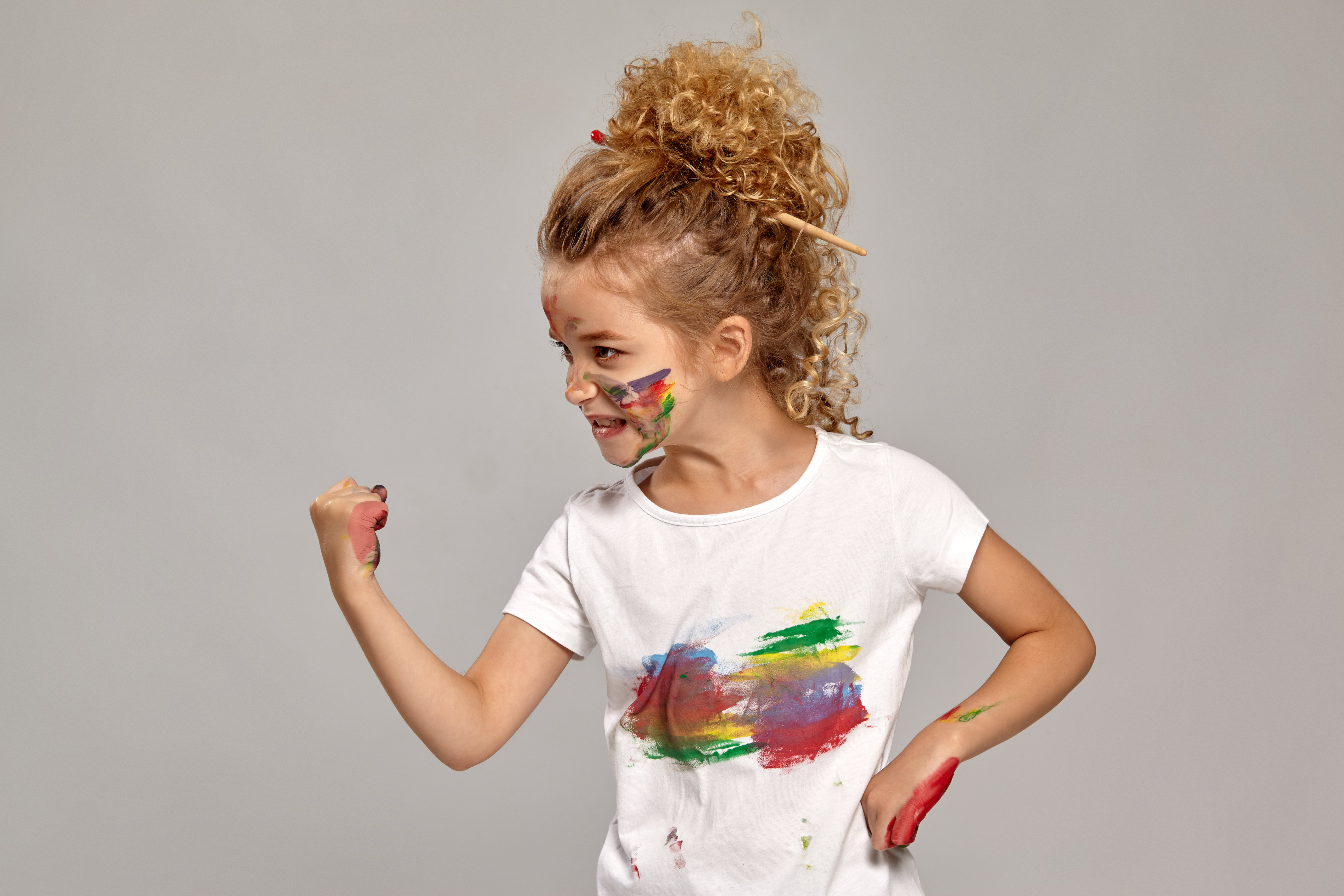Sometimes, parents need help communicating with children. This is totally normal. Whether you are present during an art activity or engaged after school, there are multiple ways to talk about a child’s work, so they remain confident and continue trying. So, how should you compliment a child’s artwork?
Educators recommend that parents and teachers focus more on guiding children through the art process rather than complimenting the artwork itself. Children benefit from internalizing a method for achieving a specific goal and are reassured when a parent repeats their actions.
We’ll dive into different ways to talk to your kids about their art process in this post. I want to explain why over-praising work is considered unhealthy, why praising effort seems alright, and alternatives to praise. I will give you examples of various statements to try and explain why they are more valuable than complimenting a child’s finished piece.

Should You Compliment Your Child’s Artwork?
Most educators recommend that parents boost self-esteem through a different parent or child-led conversation. According to Childcare Extension, talking about the child’s effort is critical, not the finished art project. Instead of saying phrases like, “That is amazing!” try saying things that turn the child’s attention to the energy put into a particular task. It could be more beneficial to their growth if you mention an item and the work put into applying it to the project.
What to Say About Children’s Artwork?
Create conversations based on your child’s movement, how the items interact, and what they produce as they continue their project. You may be communicating during a project, after school, or after an assignment in passing. What you say to your kid will depend on your level of engagement.
There are different ways to talk about artwork, but I like to focus on these four: actions, materials, colors, and shapes. Start with one and build your conversations by adding some together. Consider taking a moment to acknowledge how your child is developing a piece of art or project by trying one or more of the suggestions below.
Actions
Help them focus on the movement. There are many ways to incorporate verbs into a conversation, and doing this is more valuable than praising a finished piece.
During a project, describe what actions you see the child doing if you are present. They may smack a cardboard box with a marker or lay acrylic paint onto a canvas. Please describe what you see happening as they move.
You are focusing on swirling the red around.
I notice that you are smacking that box with the purple marker.
Describe how movement creates a particular stroke or shape. Explain what happens when a child uses movement to layer items. Talk about how actions build artwork. Actions can be anything like:
- Dabbing
- Stroking
- Patting
- Hitting
- Gluing
- Tapping
- Squishing
- Blending
- Scraping
- Moving
- Painting
- Coloring
- Jabbing
- Cutting
- Pushing
If you are looking at a project after its completion, stay curious. Ask your child what they did to make a specific shape appear or layer materials. Try guessing or asking.
You blended the purple and the blue.
Did you cut the foam to make them stack like that?
How did you make the swooshy shape? Did you use a foam dabber?
Materials
There are usually different products and items that kids use to make something. It is helpful to guide children, so they choose appropriate materials for their idea and understand the placement of certain things. Help them decide by talking about the qualities of the objects and whether they will help execute a specific thought. Mention the quantity during or after and whether you notice patterns in the amount used and whether it interferes.
I see that you love to use big globs of blue. It tears the paper. Try less paint on this piece.
Maybe you weren’t present during the project. Consider asking about different tools if you want to engage with your kid. Perhaps you don’t know what they used. That is okay. Chances are, they will tell you if you are wrong. Different materials could be:
- Crayons
- Charcoal
- Pencils
- Chalk
- Paint
- Dabbers
- Pastels
- Brushes
- Paper
- Glue
- Canvas
- Felt
- Glitter
- Feathers
- Scissors
- Stencils
- Markers
- Watercolor
- Paint sticks
- Cardboard
- Tape
Creating layers of materials adds dimension. Take this time to introduce or build on their knowledge of dimensions in art. One-dimensional art has no depth, typically a line of some sort going in a particular direction. Two-dimensional structures are measurable in different directions. These shapes are usually simple and basic– think squares, triangles, rectangles. Three-dimensional art consists of added depth that contributes to its volume.
Options for materials are pretty endless. The goal should be to teach children how to learn more about their ideas. Get them thinking by describing the chosen material. Turn their attention to how it performs on their paper, canvas, construction paper, etc. Help them develop their senses by using descriptive words and explaining how materials interact with one another.

Colors
Talk about the colors.
The primary colors are red, yellow, and blue. Secondary colors are created by mixing primary colors– orange, purple, and green. Tertiary colors are made when primary and secondary colors are mixed– blue-green. Complimentary colors oppose each other on the color wheel– red and green. Analogous colors are side by side when you look at the color wheel, like blue and purple.
Don’t stress about this, of course. Try to make it fun. Take your child’s artwork and use it as an opportunity to engage, connect, and learn new things together.
Ask questions about the colors to get them thinking about how they interact. Which colors are they using? Is the color solo, or does it blend with another color? Consider how the materials change the colors as they layer.
Describe what you see happening as your child moves the chosen art item around. Use verbs that describe your child’s movements of the materials. Explain how their movement of certain things changes the colors or the overall look of a project.
Shapes
Recognize different patterns and bring them to your child’s attention. They may use a piece of chalk to make a lot of lines. Count how many lines you see. Does it look like a cornfield? Maybe it seems like a forest. Are the lines vertical or horizontal? Do they intersect anywhere?
Mention the shapes and the different ways materials make the shapes. Perhaps some lines create an outline, and others do not touch. Use directional words to help describe where the figures are appearing. Point to different parts of the page or project and ask questions.
I see a poofy shape over here. Is that supposed to be on top of the parallel lines?
Notice the space between certain shapes to enhance the conversation. Is there any significant amount of space that is untouched? This could be purposeful. Use your time to connect with your child and help them reflect on their goal.
There is a space right here next to the four parallel lines. Tell me what you think about that.
How Do You Give Good Feedback to Children?
I want to provide you with some art feedback examples.
Let’s pretend that you are at home while your child is gluing.
Dad: That is a massive blob of glue.
Son: It’s for the chair.
Dad: The chair?
Son: The chair will get stuck to the glue.
Dad: Are you planning on gluing the Barbie chair to the cardboard box?
Son: Then I can stick the Barbie butt to the chair, and it will never fall off!
Dad: You may glue the Barbie to the chair. You are right. It won’t fall off.
Son: Then I will glue the babydoll in the arms. She will never fall off either!
Let’s pretend that your child is home from school annoyed about a project.
Mom: That is a big frowny face. Do you want to talk about your day yet?
Daughter: *Shoves a paper in your hands.*
Mom: This is a torn piece of paper with some yellow paint on it.
Daughter: The paper tore. *Child sighs*
Mom: There is a lot of yellow. I can feel it is still wet.
Daughter: It wasn’t supposed to spill out like that.
Mom: Did something spill out?
Daughter: They barged in and then hit my arm!
Mom: Did someone barge in?
Daughter: Then the yellow fell onto the tree.
Mom: Oh, I see the green underneath the yellow now.
Mom: Do you want to try it again now that you are home. Can I get a fresh sheet of paper?
Let’s pretend that your child runs to you with a canvas board from a birthday party.
Daughter: Look, mom. Look at my painting! We used acrylic paint. Do you love it?
Mom: You put a lot of bluish-green at the bottom. Did you use a thick brush to spread it?
Daughter: Yea, and then we got to eat edible sparkles!
Mom: There are sparkles on the paper too. Are those edible too?
Daughter: Those are from the shaker. Look, I got to keep one.
Mom: That is a thoughtful party favor. You shook some onto the bottom left corner here.
Daughter: It is for the mermaid.
Mom: There is so much glitter. I didn’t even see the mermaid sticker underneath.

Why is Feedback More Important Than Praise?
Praising a particular piece of work teaches children to value the evaluation and not the process of creating. Kids learn to search for approval when they notice patterns of praise instead of identifying problems they encounter during a project.
Feedback shows them that you care about their methods and want to learn more about their internal dialogue and creativity. Expression is important. Neutral input helps children learn to value their creative expression. Feedback is better than praise because children learn more about themselves instead of searching for adult approval.
Is Over-praising Bad for Children?
Some therapists and educators believe that over-praising is harmful to children. Others think it is acceptable in small quantities. Like most things, it is okay when done in moderation. Learn about the different options and do what is best for your family. Focus on praising the effort and not the completed project, and your kid will be okay.
According to psychotherapist Carolyn Mehlomakulu, there is no benefit to praising. Her article says that kids only learn to get approval to get praise from adults and think less of their artwork or creative endeavors.
She describes the artwork as an opportunity for children to feel good about themselves, regardless of the product, mistakes, and comparisons.
Children should create art and get feedback without judgment. It is unhealthy for children to learn to value the praise and more healthy to understand the process and the effort.
What About Praising Effort?
Conversely, Gwen Dewar says, “It depends.” In this article, Dewar says scientific evidence suggests that some praise is fine and can be slightly helpful in motivating a child if done to highlight hard work or an attempt.
“Process praise”, when done well, can boost children’s pro-social behaviors and teach them to value the effort.
Praising the effort instead of the product is a different way to give feedback and is not dependent on the product. It is a way to recognize how hard a child worked to achieve something.
You have worked for so long! It has been 30 minutes.
I like how you stuck that foam ball to the cardstock.
You have been trying so hard to get that right. You did it!
What If My Child Fails at an Art Project?
Reflect with your child to highlight the materials used, implemented methods, and the finished product. They may not have a clear understanding of what they want to create. Take the time to talk with your child about their goals and make a kid-friendly system to follow to achieve their goals. They may need more time, different items, or more time deciding what they want to make.
Repeat what happens as they create, so they learn to verbalize their actions. This will teach them to use their internal dialogue to reflect on the process when you aren’t present. They will be more mindful of how they got to where they are in the process if they repeat their actions aloud.
Value their efforts by acknowledging their hard work, even if they failed to create a specific image or structure. Teach them failing is quite normal and just another opportunity to succeed in the future. Show them that they can continue experimenting with different materials to observe what is happening.
Display artwork regardless of the outcome. Children succeed at things daily. There is no way to learn everything in one sitting. Posting projects on a wall or ceiling reminds the child of their unique interests, behaviors, and motivation.
Conclusion
Hopefully, this gives you a clearer understanding of over-praising, praising efforts, and alternatives to praising an art project. I gave you examples of different ways to talk to your kids about an art process and explained why over-praising is considered unhealthy. There are some alternatives to praise, and they are considered more useful for development.
Remember that parenting is an evolving process, just like art. If you think you fail to recognize the process or your child’s efforts, there is likely an opportunity to try again in the future.
